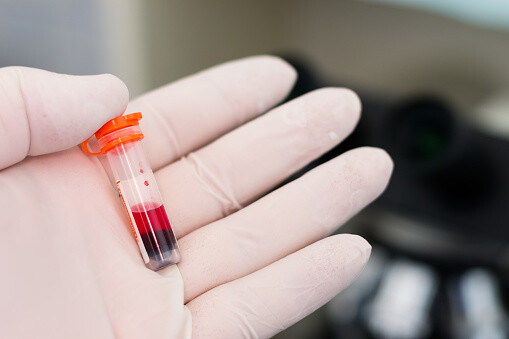? Is it possible to notice the symptoms of excess iron in the body
Genetic mutations are the most common cause of iron overload
This article aims to show the extent of the patient’s ability to notice the symptoms of excess iron in the body, in addition to providing the reader with the most prominent symptoms that appear on the body and indicate infection with this dangerous disease. The article also addresses a lot of important information about the disease of excess iron in the blood as well. Including: mentioning the method of treatment, and appropriate home instructions to control the disease, as well as mentioning the method of diagnosing iron overload and the most prominent complications that it causes.
? Is it possible to notice the symptoms of excess iron in the body
There are many symptoms that indicate an excess of iron in the human body, and these symptoms can be noticed by the patient and health care providers easily; Including: exposure to joint pain and general weakness in the body, and despite the great benefit of iron in the body; However, it becomes harmful when its quantities exceed the normal level, and iron deficiency is the most common type of mineral deficiency in the body around the world, and it is also one of the harmful diseases.
Increase iron in the body
? What are the symptoms of iron overload in humans
Here are some of the most prominent symptoms of iron overload in the body:
Feeling of extreme tiredness and general weakness in the body.
Increased heart palpitations or irregular heartbeat .
pain in the joints; Including finger joints.
Exposure to stomach and abdominal pain.
Unexplained weight loss.
Loss of sex drive or feeling impotent.
Skin turning bronze or hazy.
Memory changes and symptoms of foggy memory.
High blood sugar levels in the patient.
Decreased testicle size in males and decreased menstruation in females.
?What are the causes and risk factors for iron overload
There are many known causes and risk factors that lead to the appearance of symptoms of excess iron in the body, including the following:
Causes of iron overload:
Genetic mutations: Genetic mutations are the most common cause of iron overload disease, and a person must carry two of the disease genes in order to be infected, and symptoms do not appear if an individual carries one gene for the disease.
Blood transfusion or taking iron: Transfusion of blood from others can sometimes lead to an increase in iron in the human body, and iron increases due to taking iron pills or taking iron injections.
Liver diseases: Excess iron in the human body results from some diseases that affect the liver in some cases. Including hepatitis C, as well as fatty liver disease.
Hemodialysis: Some people need dialysis if the kidneys fail to perform their function, and this leads to iron overload disease after a long period of time.
Anemia: Anemia leads to a decrease in the number of red blood cells in the human body, and it is one of the diseases that sometimes cause an excess of iron in the body.
Risk factors for iron overload:
Ethnicity: Northern Europeans tend to have more symptoms of iron overload than other people, and it's less common in blacks, as well as Asians and Hispanics.
Family history of iron overload: The chance of developing iron overload disease increases when other family members have other cases. This is because genetic genes are the main causes of this disease, as previously.
Gender: Males are exposed to higher levels of iron than women; This is because women lose blood and iron during menstruation, and the percentage of women suffering from iron overload increases after menopause .
How is iron overload diagnosed?
Diagnosing symptoms of excess iron in the body depends on several tests and examinations performed by health care providers. Including the following:
Genetic tests: The doctor performs genetic tests; To verify the presence of genes that lead to iron overload disease in the body, it is one of the diseases transmitted from parents to children through genes.
Liver biopsy: Sometimes a liver biopsy is taken independently, while sometimes it is taken with MRI tests. Liver biopsy tests give accurate results about iron levels in the patient's blood.
Haemochromatosis (Iron Overload) - iron physiology, causes and pathophysiology
Transferrin saturation measurement: The transferrin saturation test can provide the doctor with accurate information about the amounts of iron that bind with the iron-carrying protein in the body. Transferrin is very high when it exceeds 45% in the patient.
Magnetic resonance imaging: MRI tests can be done to check for large amounts of iron to build up in the liver and heart. However, it is not always an effective test; Sometimes iron accumulates in other parts of the body, such as the pancreas.
? What is the treatment of excess iron in the blood
Iron overload is usually treated in one of the following ways:
Therapeutic phlebotomy: Patients should perform therapeutic phlebotomy regularly; To get rid of the symptoms of excess iron in the body, a treatment that aims to remove some blood from the body to reduce iron levels.
Iron-chelating drugs: Iron -chelating drugs are available through an injection into the bloodstream, or by pills taken orally, which contribute to the removal of excess iron from the patient's body.
Changing the dietary pattern: the patient should follow all the health care provider's instructions regarding the eating pattern; The doctor instructs patients to avoid medications that usually contain large amounts of iron, while cautioning to limit foods that contain vitamin C.
? Are there home remedies if I have iron overload
There are many home remedies and tips that the patient should follow in order to get rid of the symptoms of increased iron levels, most notably the following:
Reducing the iron content in food: The iron content in food is reduced in many ways; Most notably, refraining from eating iron-fortified foods; Like some types of breakfast cereals.
Avoid iron and vitamin C supplements: Patients should avoid iron and vitamin C supplements; Because it has harmful negative effects on people with iron overload disease.
Selecting types of meat: Patients should choose the types of meat they eat when suffering from iron overload, and they should avoid red meat, as well as raw seafood, so that none of the symptoms of iron overload appear in the body.
Stay away from eating raw oysters: Eating raw oysters leads to many harmful negative symptoms for people with an excess of iron; This is because it contains some types of bacteria that cause serious infections in case of iron overload.
? Are there complications of iron overload disease
It is necessary to seek to treat the symptoms of excess iron in the body after the completion of its diagnosis; In order to avoid the serious complications that this type of disease can cause; Including the following complications:
?Is there such a thing as too much iron
Heart failure: Increased iron levels have a negative effect on the regulation of heartbeat, and it also leads to heart failure in some cases. The term heart failure refers to the inability of the human heart to pump blood to the body in the appropriate quantities.
Liver diseases: Excess iron levels in the body cause many diseases that affect the liver; Most notably: liver damage disease and cirrhosis of the liver , in addition to liver cancer.
Reproductive system problems: In some women, premature menopause is caused by excess iron levels, and this disease sometimes leads to erectile dysfunction in men .
Death: Despite controlling the condition of excess iron in the blood when it is detected and treated in a timely manner; However, the lack of treatment leads to the death of the patient.
Pancreatic damage: Pancreatic damage is one of the complications that result from excess iron in the blood, and damage to the pancreas leads to diabetes in patients.
Skin discoloration: Excess iron in the body causes the skin to change color until it becomes bronze or gray; This is due to the deposition of excess iron in the epidermal cells of the skin.
Arthritis: A person suffers from arthritis for many different reasons; Most notably , osteoporosis , and this disease is one of the complications of increased iron levels in the blood in some cases as well.
How to increase iron stores in the body
Human iron stores increase when the body absorbs large amounts of iron when eating food; There are many foods that contain iron. Like red meat, the body then stores iron primarily in the liver, pancreas, and heart, with the inability to get rid of excess iron naturally; Because of genetic genes, which cause hemochromatosis or other reasons; This leads to the accumulation of iron and an increase in its levels significantly.
https://misbar.com/qna/2021/12/14/%D9%87%D9%84-%D9%8A%D9%85%D9%83%D9%86-%D9%85%D9%84%D8%A7%D8%AD%D8%B8%D8%A9-%D8%A3%D8%B9%D8%B1%D8%A7%D8%B6-%D8%B2%D9%8A%D8%A7%D8%AF%D8%A9-%D8%A7%D9%84%D8%AD%D8%AF%D9%8A%D8%AF-%D9%81%D9%8A-%D8%A7%D9%84%D8%AC%D8%B3%D9%85?fbclid=IwAR3PbEyYKzIYdUhF6EYJYbaFod3C3pY06tzRGKATBnyNQluLpuFQRBo5MSI



